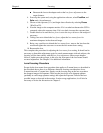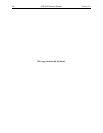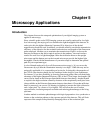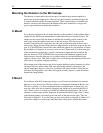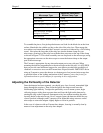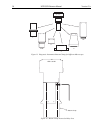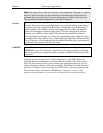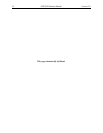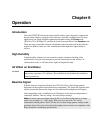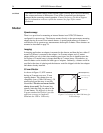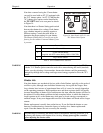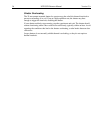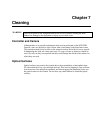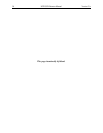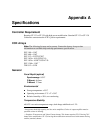
Chapter 6
Operation
Introduction
Once the NTE/CCD Detector has been installed and its optics adjusted as explained in
the preceding chapters, operation of the detector is basically straightforward. In most
applications you simply establish optimum performance using the
Focus
mode
(WinView/32 or WinSpec/32) and then do actual data acquisition in the
Acquire
mode.
There are many of possible software considerations that are addressed in the software
manual. In addition, there are a few considerations that might have applicability as
follows.
High Humidity
In high humidity climates it is not unusual to require continuous flushing of the
spectrometer’s exit port with nitrogen to prevent condensation on the window. If
condensation occurs, it will obscure the light and degrade the data.
UV Effect on Scintillator
If you have a detector with a UV scintillator (lumogen) coated CCD, protect it from
unnecessary exposure to UV radiation. This radiation slowly bleaches the scintillator,
reducing sensitivity.
Baseline Signal
With the detector completely blocked, the CCD will collect a dark charge pattern,
dependent on the exposure time and detector temperature. The longer the exposure time
and the warmer the detector the larger and less uniform this background will appear.
After temperature lock is established, wait 30 minutes for the detector temperature to
completely stabilize. Then try taking a few dark charge readings.
Note:
Do not be concerned about either the DC level of this background or its shape
unless it is very high, i.e., >400 counts. What you see is not noise. It is a fully
subtractable readout pattern. Each CCD has its own dark charge pattern, unique to that
particular device. Every device has been thoroughly tested to ensure its compliance with
Roper Scientific's demanding specifications.
CAUTION



